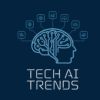🧠 The Five Pillars of Next-Generation AI: From Ethical Clarity (XAI) to Ubiquitous Power (Edge AI)
The world of Artificial Intelligence is no longer defined by simple algorithms or hypothetical futures. It is a dynamic, rapidly evolving ecosystem where today’s breakthrough is tomorrow’s baseline. As AI permeates every sector—from finance and manufacturing to personalized healthcare—the focus is shifting from merely achieving high accuracy to ensuring trust, efficiency, and ethical deployment.
For businesses, developers, and tech enthusiasts looking to stay ahead of the curve, it is vital to go beyond surface-level understanding. The true future of machine learning is being forged in five interconnected, critical areas. These are the five pillars of next-generation AI that are redefining how models are built, deployed, trusted, and ultimately, how they transform humanity.

Pillar 1: Beyond the Black Box: Why Explainable AI (XAI) is Critical for Trust and Adoption
For years, highly accurate Deep Learning models were plagued by the “black box” problem. We knew what the model predicted, but not why. In sensitive fields like legal, financial, or medical decisions, this opacity is unacceptable. This is where Explainable AI (XAI) steps in.
XAI is a set of techniques that allows humans to understand the output of machine learning models. It’s not just an academic exercise; it’s a fundamental requirement for AI governance and public trust.
The Need for XAI in the Real World
-
Regulation & Compliance: New laws, such as the EU’s GDPR and upcoming AI Acts, increasingly mandate the “right to explanation” when an automated decision significantly affects an individual.
-
Debugging & Iteration: When an AI model fails, an XAI framework helps engineers pinpoint the specific data feature or bias that led to the incorrect output, drastically accelerating the model improvement cycle.
-
Fairness & Ethics: XAI tools can reveal if a model is relying on protected attributes (like race or gender) to make decisions, helping practitioners audit for and mitigate systemic bias.
Leading XAI methodologies like LIME (Local Interpretable Model-agnostic Explanations) and SHAP (SHapley Additive exPlanations) are becoming essential components of the modern Machine Learning Operations (MLOps) pipeline. By providing feature importance plots and localized prediction rationales, XAI is transforming opaque models into transparent, auditable systems, making AI adoption possible in mission-critical environments.
Pillar 2: Model Architectures: Transformers vs. State-Space Models (SSMs)
The last five years of Artificial General Intelligence (AGI) progress have been dominated by the Transformer architecture. Responsible for the power behind modern Large Language Models (LLMs) like GPT and Gemini, the Transformer’s self-attention mechanism fundamentally changed how sequential data (text, video, audio) is processed.
However, the Transformer architecture has a key limitation: its complexity scales quadratically ($O(n^2)$) with the input sequence length ($n$). This means that doubling the amount of text you feed into the model quadruples the computational cost. This high computational and memory footprint makes very long-context tasks prohibitively expensive and slows down model training.
Exploring the Next Generation: State-Space Models (SSMs)
The search for more efficient architectures has led to the revival of State-Space Models (SSMs). Architectures like Mamba are rapidly gaining traction as a potential successor or complement to the Transformer.
SSMs offer a linear ($O(n)$) complexity, which means their computational cost only increases proportionally to the input length. This simple change translates to massive gains in efficiency for long-context tasks, such as summarizing entire books or processing long video streams.
The key advantages of State-Space Models include:
-
Linear Scaling: Faster training and inference for long sequences.
-
High Throughput: Designed for efficient processing on modern hardware.
-
Improved Context Retention: Better at remembering information across extremely long-distance dependencies in the data compared to standard attention mechanisms under memory constraints.
The current trend is a race to find the ideal architecture that combines the parallel processing strengths of Transformers with the efficiency and long-context handling of new SSMs. This architectural innovation is a primary driver of the next wave of AI breakthroughs.
Pillar 3: Synthetic Data: Solving Privacy Issues and Accelerating AI Training
In the data-hungry world of AI, the biggest bottlenecks often aren’t computational power or algorithm complexity—they are data scarcity and data privacy. Highly sensitive data (like patient records, proprietary financial transactions, or user behavior) is often too difficult or expensive to obtain, clean, and use due to rigorous compliance requirements.
Synthetic data is the revolutionary solution. It is data that is artificially generated by an AI model, not collected from real-world events. These datasets mimic the statistical properties and patterns of real data, allowing them to be used for training new AI models, but they contain no actual, personally identifiable information (PII).
The Triple Threat Advantage of Synthetic Data
-
Privacy & Compliance: Because synthetic data is fully anonymized and non-reversible, it eliminates the risk of exposing sensitive PII, allowing developers to train powerful models in heavily regulated industries like Fintech and Healthcare.
-
Bias Mitigation: Real-world datasets often reflect historical human biases. Synthetic data allows developers to strategically over-sample underrepresented groups or manufacture scenarios that currently lack data, effectively de-biasing the training process before a model ever goes live.
-
Cost & Speed: Generating a vast synthetic dataset can be significantly cheaper and faster than real-world data collection, labeling, and cleaning, drastically accelerating the AI development lifecycle.
As data regulation tightens globally, the ability to generate and utilize high-fidelity synthetic data will become a competitive necessity for any organization focused on scalable and ethical AI training.
Pillar 4: Running AI on Your Phone: The Rise of Edge Computing and TinyML
Historically, AI required powerful, remote data centers (the Cloud) for processing. This meant every request—from asking a voice assistant a question to face unlocking a phone—had to travel hundreds of miles, resulting in latency and requiring constant bandwidth.
Edge AI fundamentally changes this by processing the data where it is collected—on the edge of the network. This includes devices like smartphones, industrial sensors, drones, and even specialized microcontrollers.
The Power of TinyML
A specialized subset of Edge AI, TinyML, focuses on bringing sophisticated machine learning models to extremely low-power, resource-constrained devices (often using milliwatts of power). This capability unlocks immense value:
-
Zero Latency: Decisions are instantaneous (e.g., collision avoidance in a drone or real-time object detection in a security camera).
-
Enhanced Privacy: Sensitive data (like voice commands or sensor readings) is processed locally and never leaves the device, eliminating transmission risks.
-
Reliability: Edge models work seamlessly even without an internet connection.
-
Sustainability: Reduced data transmission and constant cloud interaction leads to lower energy consumption.
The convergence of efficient hardware and highly optimized models is making AI ubiquitous, putting powerful inference capabilities into billions of devices, driving the next phase of the Internet of Things (IoT).
Pillar 5: AI in Health: From Diagnosis to Drug Discovery
Perhaps the most impactful application of next-generation AI is in transforming healthcare, moving the field into an era of truly personalized medicine. This pillar leverages all the advancements from the others—XAI for trust, efficient models for speed, and synthetic data for privacy.
Two Transformative Applications:
-
AI-Driven Diagnosis and Prognosis:
-
Medical Imaging: Deep learning models can now analyze X-rays, MRIs, and CT scans faster and often with greater precision than the human eye, identifying subtle markers for diseases like cancer, diabetic retinopathy, or Alzheimer’s years before clinical symptoms appear.
-
Wearables & Remote Monitoring: Edge AI on medical wearables can continuously track vital signs and alert doctors to early signs of cardiac events or sudden deterioration, moving care from reactive to predictive.
-
-
Accelerating Drug Discovery:
-
Molecular Modeling: AI algorithms can simulate how millions of compounds will interact with a specific disease target, drastically narrowing the pool of viable drug candidates.
-
Clinical Trial Optimization: Machine learning models analyze patient data to predict who will respond best to a specific drug, ensuring more efficient, smaller, and faster clinical trials.
-
Personalized Treatment: By analyzing an individual’s genetic makeup, health history, and current biomarkers, AI can determine the optimal dosage and drug combination, leading to truly personalized medicine.
-
The integration of AI into this sector is not just an incremental improvement; it is a paradigm shift that promises to extend human lifespan and revolutionize the global health landscape.
Conclusion: The Road Ahead for Next-Generation AI
The future of Artificial Intelligence will not be defined by one single invention, but by the thoughtful and coordinated advancement of these five critical pillars.
-
XAI builds the trust required for mass adoption.
-
State-Space Models provide the efficiency to run larger, more complex systems.
-
Synthetic Data offers the scalable, ethical data to train them.
-
Edge AI/TinyML provides the ubiquity to deploy them everywhere.
-
AI in Health demonstrates the profound human impact that makes all this effort worthwhile.
Understanding how these elements interlock is essential for anyone looking to innovate in the coming decade. The transition from AI novelty to AI utility is happening now, and these five pillars are the foundation.
Which of these five pillars do you believe will have the greatest impact on your industry in the next two years? Share your thoughts in the comments below!



